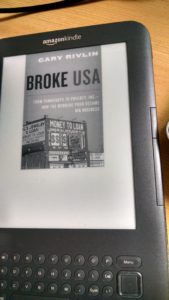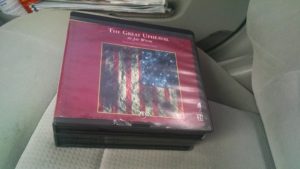Reno Has Begun
The renovation of the house is underway as I continue my luxurious hotel lifestyle. At least we picked paint colors to appease the water spirits-


The renovation of the house is underway as I continue my luxurious hotel lifestyle. At least we picked paint colors to appease the water spirits-



The ongoing saga of my encounter with the water spirits continues. My house is asbestos and water-free, but not tenable. While the insurance company takes its sweet time approving the repairs, I am domiciled in a residence hotel, in a cozy little one bedroom suite with a kitchenette. It’s turning out to be a life I could get used to.
Breakfast is free every morning, and each day someone comes and washes the dishes and makes the bed. So with a smaller space and maid service, I am freed from the drudgery of chores.
My bestie has come to visit, and we have made a number of excursions to places near the hotel. Our first was to a Cinebistro to see Wonder Woman. This venue is a sort of luxury movie theater, with good drinks and food served, and, astonishingly, no ads showing while you sit in your reclining seat waiting for the movie to start. A nearby taco place turned out to be similarly upscale.
The real treat was discovering that while at the hotel we have a pass to a Lifetime Fitness that is within walking distance. This is a gigantic fitness center with multiple pools and a huge floor full of fancy exercise equipment with touchscreen controls. With monthly fees four times the amount, it puts the dive fitness center where I am a member to shame.
The hotel is not too far from my all but abandoned house, where apparently an upper-middle class commercial mecca has existed of which I was unaware. It’s newer development than my neighborhood, and on the leading edge of a consumer trend toward higher quality services and experiences over commodities.
So now it feels like I have been cast from home and marooned on the shores of affluenza. With the insurance covering the hotel bill, I’m not sure if the water spirits were punishing me by trashing my house, or offering me a free spa vacation.
I know this is all going to come across as bragging, but it is where this bear’s life is at. Curiously, my personal trajectory has been on the up ever since the financial crisis. I am in a natural place, I suppose, for a lucky man at the peak of life.
This review is my second of a book about the Third Turning that I finally got around to reading in the Fourth Turning (the first is here). This second book is Broke, USA, about what the author calls the poverty industry.
I’m actually reading it on my Kindle:

It is one of the first models of Kindle, and it is full of ebooks, which I will probably need the rest of my life to read. So assuming I don’t lose the device (which I almost did once at an airport) and that it doesn’t break down, this will be the only ereader I ever own.
Broke, USA chronicles the rise, from the 1980s to present times, of financial services targeting people with low incomes and poor credit. The venerable example of such a service would be that provided by a pawn shop: a small loan using some valuable as collateral. Other early examples are auto title loans (putting your car up as collateral) and rent to own (buy a TV for five times what it should cost because you can’t or won’t save money).
But this industry really took off in the 1980s when ambitious entrepreneurs discovered how to tap into credit markets to profit off of the yield spread available when making risky, high interest loans to individuals with poor credit. All they had to do was convince the big lenders to give them access to the money. And so new services were born, such as the payday loan, backed by the promise of future income (just show them your pay stubs). And the “early tax return,” more accurately termed a refund anticipation loan, a sure bet for the lender because there is close to a 100% chance that the IRS will deliver the refund. Easy money because someone can’t or won’t wait three weeks for their tax refund.
These services end up being very profitable, because even though each loan is small, there are so very many of them, and the actual interest rate earned (APR as they call it) is insanely high. Storefronts offering these services popped up all over the country throughout the 1990s, and the men who founded these businesses became millionaires. The easy money they made attracted the attention of the billionaires, and soon these companies were subsidiaries of larger, more established financial corporations.
When I started this book, and read about the pattern of low-income workers caught in a revolving door of interest payments and fees, my first thought was that this was a story about Generation X in the Third Turning – a generation and an era of short-term thinking and risk taking. But as it turns out all the living generations are involved in this saga. Many of the entrepreneurs who pioneered this businesses are Boomers, while the corporate moguls who bought them out are, as you may well imagine, from the Silent Generation. The poor customers in this industry come from all generations.
And many members of the Greatest Generation became victims of what has become known as “predatory lending.” In a particular heinous practice known as “equity stripping,” lenders identify someone with a small fixed income (such as a Social Security pension) but with a home that is all or mostly paid off (perhaps because they are elderly and retired). If they can be convinced to take out an equity loan on their house in not very favorable terms, the lender essentially extracts some of the value of the asset. If they are not very financially savvy, or even declining in mental faculties, they can be convinced over and over again to refinance, transferring their net worth to the lender in the process.
This brings us to the mother of all predatory lending practices, the subprime mortgage. This is, of course, a mortgage loan made to someone with a poor credit rating, structured to pay out more money to the mortgage-holder in compensation for the risk. The now familiar story is that there was an explosion in the origination of these kinds of loans in the 2000s, to the point where anyone who could sign their name could get one. The mortgages were sold on secondary markets, bundled together to dilute or disguise their riskiness, and blessed by irresponsible credit rating agencies. When the inevitable wave of defaults began, the world economy was almost destroyed.
The generation whose archetypal role in this story proves most true to form is the Boomer Generation. From their numbers come the activists and politicians who have campaigned against predatory lending, and tried to regulate it. But also from this generation are the lobbyists for the lenders, and the politicians on the other side of the aisle. The author paints a picture of iniquity, but these practices do have their advocates.
The argument is that they offer access to basic financial services not normally available to people with no credit. Considering the circumstances they are in, someone who does not have a credit card might find it in their best interest to borrow a little cash despite the high surcharge. That cost is actually less than that of a bounced check, or a utility reinstatement fee. They are simply making a choice that is rational for them. Home buyers with low incomes and low credit might not be able to purchase a house at all if there were not subprime mortgages available. Why should the government deny consumers these opportunities and the freedom to choose?
When the Third Turning ended with the global financial crisis, the generations in America played their parts to the hilt. The Boomers politicized the issues involved and created two opposing camps, but failed to avoid the crisis. The Gen-Xers were at mid-life when the bubble burst, and they bore the brunt of the damage. And the Millennials learned from observation to be cautious about incurring debt.
Curiously, Millennial risk-aversion doesn’t apply to student loan debt, a topic which the author reaches at the end of the book. Student loans are being described as predatory now, extending the poverty industry into the solidly middle-class. Considering this along with record wealth inequality, anemic economic growth, and a difficult job market for young adults, the story of broke America has certainly not come to an end.
So a couple of weeks ago I had a water leak on the second floor of my house, which has led to an accelerating series of disruptions to my life. Giant fans and dehumidifiers have been blowing noisily for most of the time, with holes cut in the drywall for access to the interior spaces.
The restoration company found asbestos in the ceiling texture (building was constructed in 1979) and before the ceiling can be dried out properly, an abatement must be performed. This will require the first floor to be cleared out. Now all my “non-essentials” – mainly books, board games and bric-a-brac – are boxed in preparation.

While I might question calling books and games non-essential, it is mostly stuff I never use. Do I really need all these vanities and distractions? Just to look at and feel smug? But then it does represent decades of my life accumulating what were in my mind the best of books and games, and many souvenirs of my adventures. I feel at once lighter, stripped down to the bare bones of existence, but also unmoored, swept away by events beyond my control.
And a little anxious about entrusting my possessions to people I have only just met. I swear I could see the dollar signs ringing up in their eyes as the work requirements snowballed.
Still there is an exciting sense of novelty, and the joy of testing my resilience. I am a creature of habit and now must make new habits. This just comes with homeownership; I am fortunate that I have had this house for nearly eight years and this is the first major event. And I am grateful to live in a peaceful and prosperous nation where I can even afford a house and the comforts it provides, with insurance to cover the repairs when the water spirits decide to show their wrath. As I know, most people on this planet are not so lucky.
I have always loved music. It touches the soul. As the ancient Greeks theorized, the harmonic structure of music reflects the order and harmony of the Universe. And so the joy experienced when listening to or performing music is transcendent – you really are reaching out to heaven!
I wanted to be more engaged with music, to do more than just listen to endless Spotify playlists, so last year I joined a choir. I had been in a choir in junior high school, so I figured I could jump back in (“back after a 40 year hiatus,” as they say). Of course it has been a lot of work to get up to speed on how to sing again, but it has also been tremendous fun.
One thing I love about choir is that it brings all the generations together – this is a hobby that doesn’t appeal to one particular age group only. We have choir members from every generational archetype. Yes, that’s right, we have Millennials, Gen-Xers, Boomers and at least one Silent. He told me himself – he was born in 1940 and even identified himself as a member for the Silent generation.
We are called The Singers for Goodness Sake, and are non-profit, performing mainly in retirement communities. Tonight is the last performance of the season, and then I will take a break for the summer, when traveling will take priority. I’ve feel like I’ve come a long way in the eight months since I started singing, and like we’ve come a long way as an ensemble. I look forward to making more music with friends of all ages.
I listen to audio books in the car, on the premise that I spend so much time driving (either commuting or travelling) that I should at least be into a book simultaneously, especially since I will not live long enough to read all the books I’d like to, even if I live to be a hundred and twenty. My commute is 20-30 minutes each way; that is a lot of time frittered away if I am not also doing something else!
This latest one should fill in a good deal of that valuable time:

To save valuable money, which is also time, I borrow audio books from the library. The Wake County library system has an excellent collection of books of the types I like, which is mostly history. And that’s right, this one has 26 discs!

It’s The Great Upheaval by Jay Winik, and unsurprisingly there is much to be said about this particular time period (late 18th century). I’m sure I will learn a lot, although there is one slight disadvantage to audio books – sometimes I space out and miss bits. This is not a problem with the written word, since the words are still there where I left them after I return from a reverie.
Still, it will be nice to have something to look forward to while I am slogging through traffic. Why aren’t you people all telecommuting?
Nearly ten years ago, in late 2007, after about six months of unemployment, I started a job as a software tester on a data warehouse team in a corporate IT department. I had just enough database experience to bluff my way through the interview, though I had never worked with data warehousing before. So I started reading Data Warehousing For Dummies (I did not bring it to the office) and went to work. When I joined the team it was me and three Indians. I found it hard to understand their English, but despite difficulties communicating and my lack of subject matter expertise,I became productive.
I remember posting on a now-forgotten social media site (yes, it was MySpace) how glad I was to have found work, and how I now had two tasks before me: to learn data warehousing, and to learn to understand English spoken by Indians. Fast forward to 2017, and I have become an expert at both skills. I am on my third data warehouse gig since then, and in all three companies there has been a preponderance of associates from India. Where I am now, I would say about 50% of the staff. I bring this up in consideration of the tenor of the times, with Indian engineers now feeling unwelcome, even endangered in this country.
Personally, I’m happy to work with anyone, as long as they’re not a complete jerk – I don’t care where they are from. Are companies in the U.S. abusing the visa system to depress labor costs? Honestly, I’m not involved enough in the hiring process to know. I will say that I have heard one person who was hiring for a position say that they wanted to hire American, but most applicants are from India. And an American I know has said that when he looks for work at contracting sites, he feels overwhelmed by the competition from Indian engineers. I think the truth is that India has a huge population and has focused on training an entire generation of workers in IT skills – and that’s reflected in the make-up of the IT labor pool.
Can the new administration’s “Hire American” order alter the IT labor force by fiat? I guess from where I sit I can let you know, in time. But what keeps people out of skilled labor is not having the skills or experience in the first place – not a problem which hiring restrictions will solve. Training is a better idea. I do have one piece of advice for any young person who wants to join me in IT adventuring – get your work experience as soon as you can, preferably while in school.
Meanwhile, I’m sure I can keep developing in my field and stay employable; companies will always need people to manage their data. Automation doesn’t worry me because software automation just expands the possibilities of what people + computers can do together. I expect there will be more corporate campuses in my future.

Last night I attended an Eastern Orthodox Pascha celebration, right here in central North Carolina where I live. I have always been fascinated by this branch of Christianity, so long in pedigree, but not what I usually encounter in the Southern United States. A friend of mine has been attending their services, and I asked if I could come along, and he verified with the priest that I was welcome.
So at about 10pm we drove to the church, which turned out to be a small, squat building along a woody roadside, as common a structure as you will find in the South. We were warmly greeted by a couple of gentlemen at the front and ushered in. So then came my first surprise – the church was dark! There were no lights on, and it was hard to see anything. People helpfully guided us to where we were to take a thin, tapered candle from a box, and then we found some seats in the back.

As my eyes adjusted to the darkness, I could just make out the depictions of Jesus Christ and of the Madonna and infant Jesus, in the classic Byzantine style. The altar was actually separated from the congregation by basically a gate, a significant difference from the Roman Catholic church. The scent of incense was heavy in the air.
From behind the gate the priest started chanting, and was joined by deacons in front. They read from ornamented liturgical books, but in plainchant. Sometimes the congregation would respond, also chanting. The whole ritual evoked the ancient past – here was a way of worship that went back over a thousand years, almost unchanged, except that the participants were modern Americans and spoke/chanted in English. In the dark, the only distraction was the fussing of small children.
At one point we all lit our candles, starting with the priest, who then passed the flame to two worshipers in the front, who then passed it along. Then we processed out of the building, and around a path lit by luminaries, which we circled three times, and when we got back to the building, there proceeded a theatrical ritual of the priest requesting admittance, and being rebuffed. When eventually we were admitted, the lights were on inside.
The liturgy continued. I noticed a boy started crawling under the chairs, and I thought, my, he is rambunctious. But then I saw that an elderly man was tucking him in with a blanket! I saw that other children were now lying under the chairs, snoozing, and concluded that it must be that they were allowed to because of the late hour. The ritual was very long. The worshipers stood or sat as they wished; I realized that there was no formal requirement, although at certain points everyone stood.
In the later part of the ritual, the priest would say “Christ is risen!” and the response would be “Indeed he is risen!” Then he would repeat the phrase in a few other languages, and get some responses. I assumed one of the languages was Greek, but I didn’t know. In the end there was communion, a familiar rite to me from my Roman Catholic background. The priest blessed us with holy water, and also blessed a basket of red-dyed eggs.
The liturgy finished after over two hours – it definitely takes dedication to properly participate in the Orthodox church! But it felt like we earned the feast which followed, in tables set up in a separate space. Everyone had brought baskets full of food and wine. They were very welcoming of me; I sat with my friend next to a Romanian couple (they moved to the U.S. in 1980) and partook of food and conversation.
As the night wore on and the crowd thinned, we ended up in conversation with the priest and some of the deacons, all of them bearded and sporting wedding bands (no celibacy requirements for priests in this church). I learned that the building was only recently purchased, and is the second Orthodox Christian church in the county. I learned that the other languages spoken were Romanian, Arabic and Spanish (how did I miss that!) to reflect the languages spoken by congregants. I learned that the normally the liturgy begins at midnight (April 16 is the date of Pascha this year) but that a special dispensation had been received to begin at 10 pm from the Metropolitan – the Archbishop who presides over all of America and Canada.
We were up talking and drinking wine until well after 3:00 am. Luckily, it was a short drive to my friend’s house to finally sleep. I met some very cool people and am grateful for being welcomed to the celebration.
I enjoyed the live action Ghost in the Shell, with the caveat that I am easy to please when it comes to science fiction movies, and also movies starring Scarlett Johansson.
Overall the movie felt flat, with a plodding script, and little suspense, though it did get more interesting in the second half. Visually it was cluttered – practically littered with CGI – and with a conventional action movie score, it simply failed to capture the moody atmosphere of the original anime.
Really, none of Ghost in the Shell reboots, neither the subsequent animated films and series, nor this live version, compare to the original. With its stark, clean visual design, its savvy exposition, and its brilliant score, it stands out as one of the best thrillers ever produced. I don’t even like the “version 2.0” remaster with updated animation as much as the 1995 release.
But taken for what it is, this latest reboot is a passable sci-fi action flick. It does recreate some of the iconic scenes from the anime, which is fun to see. Its story modifies, but parallels, that of the original film, which is fine – the earlier reboots already played with the characters and plots. Like the original, it explores themes of identity, and the classic sci-fi trope of defining humanity in a machine age. In case you didn’t know, “Ghost” = soul and “Shell” = body.
Since I always look for the generational angle, I’d say there is a meaningful difference in what the major (that’s the main character – she’s a law enforcement officer) finds in her quest for identity. The 1995 Generation X major discovers freedom and possibility, whereas the 2017 Millennial major discovers belonging and purpose. The final scenes in the two films tell it all.
Finally, I will add that I dread a future of giant advertising holograms on every other street corner.

A tough day at work has put me in the mood to watch Vikings (on Amazon Prime, of course), another in the modern vein of gritty and rough-edged TV series, covering a period mostly neglected in historical drama – the Dark Ages in Europe. As you may imagine, there is a lot of warfare on the show, just what I need to heat up my blood.
One scene from an episode I’ve already watched has a Norse warband defeating a less disciplined English force, which ties into a book I recently listened to – War by Sebastian Unger, a reporter embedded with a platoon of airborne infantry in Afghanistan. In the latter case, as well, the superior training and discipline of U.S. forces allows them to prevail against a seemingly endless supply of hapless Taliban fighters, who are mostly teenage boys with almost no warfighting skills (but armed with deadly weapons and therefore a serious threat).
So across the ages, this simple military principle holds – discipline and training are the key to success in battles, whether fought with bow and arrow, spear and sword, or with rifle, mortar and grenade. But also consider that England is ruled by the English still, and the Taliban remains a force in Afghanistan. So winning battles is not necessarily going to achieve one’s war aims in the long run.
That’s enough thinking for now I am going to watch TV.
